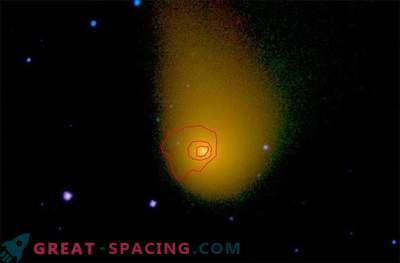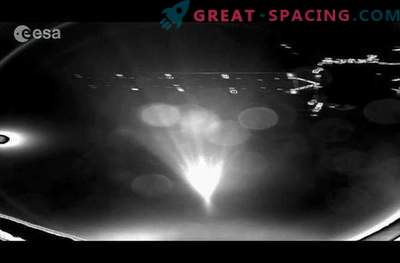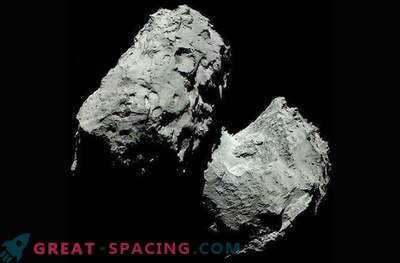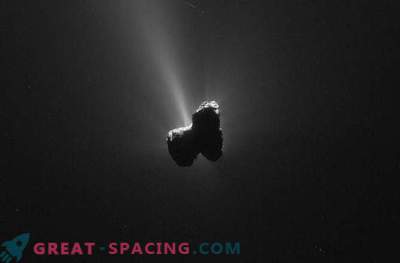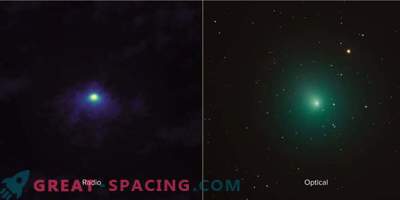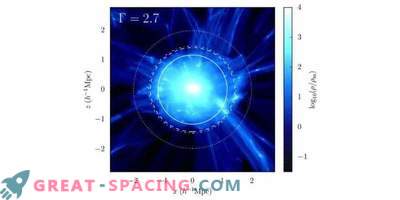
When you are asked to present an unpleasant smell, most likely, the stench of rotten rotten eggs comes to mind. This smell is caused by hydrogen sulfide, which is formed by bacteria feasting on rotting organic matter.
To the surprise of scientists studying the data from the Rosetta mission, comet 67P / Churyumova-Gerasimenko also emits hydrogen sulfide. But that is not all. Comet also emits ventilation ammonia, methane, hydrogen cyanide and formaldehyde, chemicals that have odors associated with urine, alcohol, bitter almonds and vinegar.
In short, if we were able to deliver a fragment of this nasty cometary cocktail to Earth, one sigh would be enough not only to shed a tear, but also to suffocate.
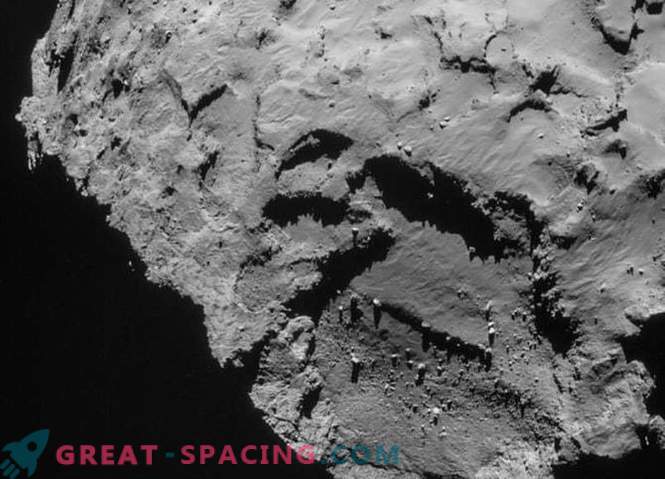
Surface of comet 67P / Churyumov-Gerasimenko close-up
This delightful array of chemicals in a comet coma (the cometary atmosphere surrounding the nucleus) was detected using a Rosetta mass spectrometer.
“The smell of 67P / Churyumov-Gerasimenko is quite strong,” says chief scientist Catherine Altwegg. "The smell of rotten eggs (hydrogen sulphide), the stables (ammonia) and the acrid stifling smell of formaldehyde is mixed with a light bitter almond (hydrogen cyanide)."
"Add a little whiff of alcohol (methanol) to this mixture, along with vinegar (sulfur dioxide) and a hint of the sweet, fragrant smell of carbon disulfide, and you will feel the spirits of our comet."
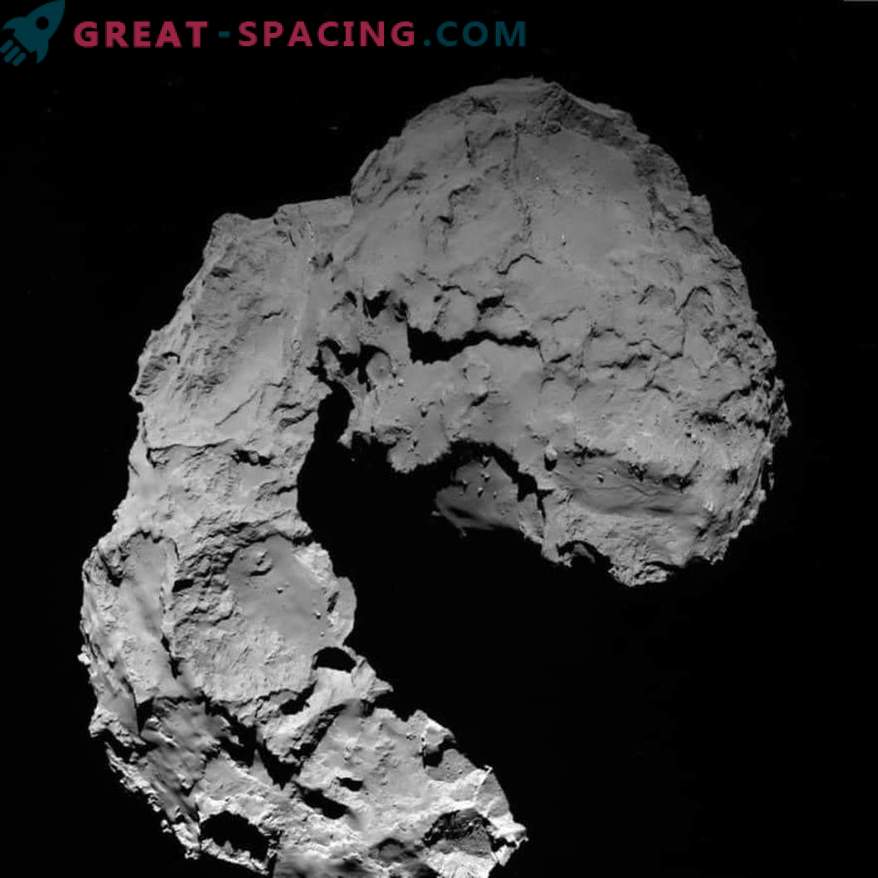
The wide-angle camera OSIRIS made a comet survey at a distance of 22.9 km from the nucleus.
Sounds amazing. The chemicals found surprised scientists. It was assumed that only the most volatile ice of water and carbon dioxide will sublimate in space when the comet approaches the Sun. Comet 67P / Churyumov-Gerasimenko is currently at a distance of 250 million miles from the Sun, but as it approaches, solar energy will heat the dusty surface and cause the sublimation of large amounts of ice, generating more powerful jets of gas and dust.
In the new photos sent to Earth, discovered new geysers and fountains of dust and gas.
"At the moment, we believe that most of the illuminated surface of the comet shows some level of activity," says scientist Jean-Baptiste-Vincent of the Max Planck Institute in Germany.
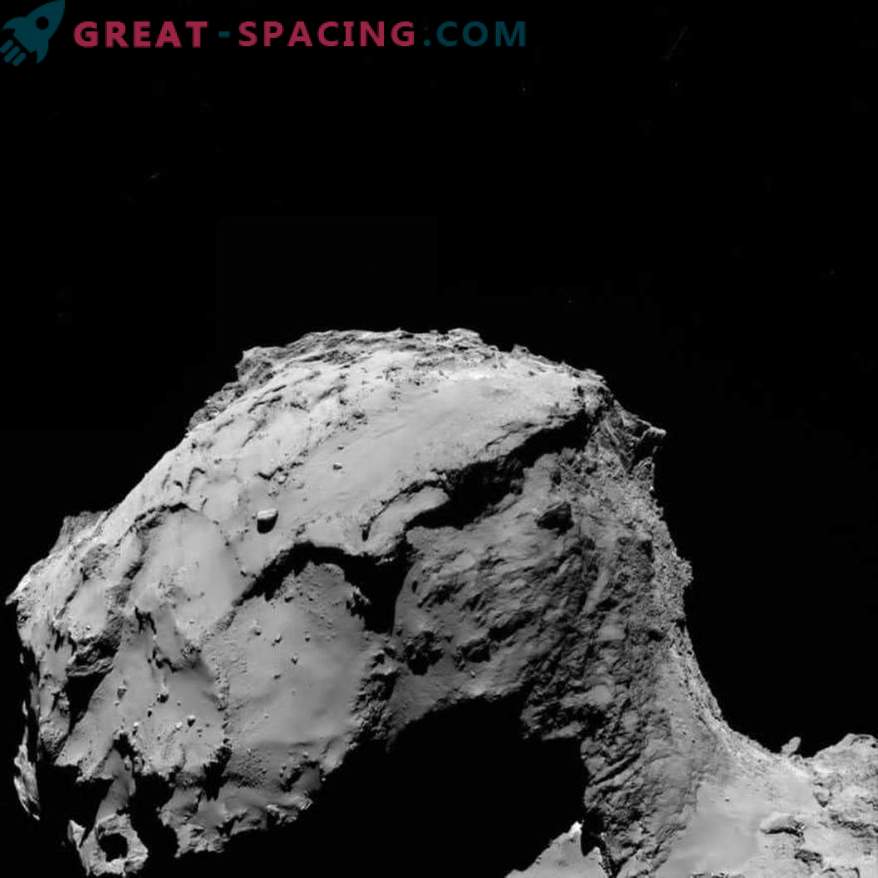
On September 30, at 02:17 GMT GMT, the OSIRIS wide-angle camera fixed the comet 67P at a distance of 15.5 km. The field of view covers 3.2 km and the resolution is 1.56 m per pixel.
“Being able to capture these emissions from a closer distance, we are able to get more detailed images,” added researcher Holger Sierks. "But the image alone cannot tell us the whole story. From one image we cannot distinguish exactly where jets appear on the surface."
The mission continues its company, revolves around the comet 67P / Churyumov-Gerasimenko and narrating us not only how the comet develops as it approaches the Sun, but also how the process of degassing the cocktail of chemicals takes place.



